Have you ever installed laminate flooring and noticed air pockets under the planks? Various factors can cause this, but there are several ways to fix the issue. In this blog post, we’ll discuss what causes air pockets and how to fix air pockets under laminate flooring. We’ll also provide tips for avoiding this problem altogether. Read on to learn more!
Summary: If you have air pockets under your laminate flooring, there are a few things you can do to fix the issue. You can try to seal the air pockets with a product like foam or caulk, or you can fill the air pockets with a material like fiberglass insulation.
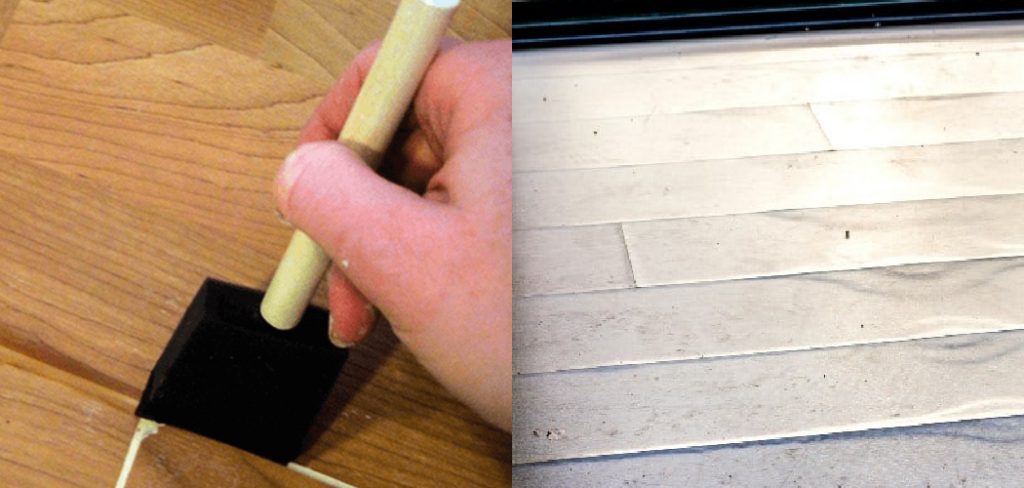
What Is Laminate Flooring?
Laminate flooring is composed of several layers of material, with a wear-resistant layer on top to guard against scratches and stains. Laminate floors can provide your home with the appearance of hardwood or stone flooring at a fraction of the cost, and they are much simpler to take care of than those materials.
Laminate floors are not only aesthetically pleasing, but they are also built to withstand heavy traffic and pets. If you’re looking for an attractive and affordable flooring option, laminate should be at the top of your list.
Why Should You Fix Air Pockets Under Laminate Flooring?
Air pockets, or voids, that develop beneath laminate flooring can cause the planks to become loose or uneven. If these pockets are not repaired, they will continue to grow larger and eventually break through the surface of the laminate.
This can damage not only the flooring but also create a trip hazard. Also, air pockets can trap dirt and debris, making it difficult to clean the floor. For these reasons, it is important to fix air pockets as soon as they are noticed.
How to Fix Air Pockets Under Laminate Flooring: The Ultimate Guide
Step 1: Find the Source of The Air Pocket
The first step is to identify where the air pocket is located. This can be done by gently pressing down on the flooring in different areas until you find a section that sounds hollow. Once you’ve found the area with the air pocket, drill a small hole in the flooring. You want the hole to be big enough to fit a small tube, but not so large that it will weaken the structure of the flooring.
Step 2: Fix the Subfloor
The subfloor is the layer of material underneath the laminate flooring. If it is not level, it can create gaps where the laminate boards meet, allowing air to get trapped. To fix an uneven subfloor, you will need to level it out. You can do this by adding Self-Leveling concrete or by shimming the low spots with wood strips.
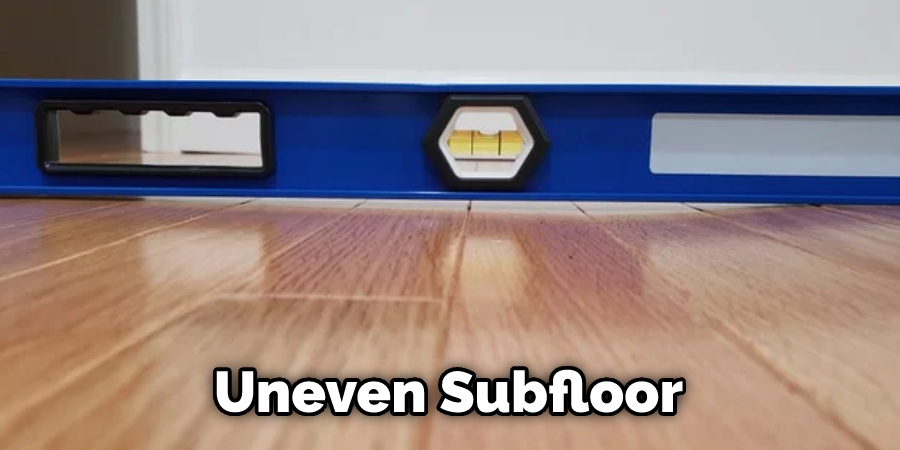
Step 3: Install Perimeter Molding
Another common cause of air pockets is a lack of perimeter molding. Perimeter molding is essential for a proper laminate installation, as it helps seal the edges of the floor and prevent air pockets from forming. If you don’t have perimeter molding, you can install it yourself or hire a professional to do it for you.
Step 4: Remove The Laminate Flooring Planks
If you find an air pocket under a laminate flooring plank, you’ll need to remove the plank to fix the issue. To do this, start by finding the end of the plank that’s not connected to another plank. Once you’ve found it, use a chisel to pry up the plank. Next, work your way down the length of the plank until it’s completely removed.
Step 5: Cut A New Piece of Laminate Flooring
If there is a damaged plank in your laminate flooring, you will need to remove it and cut a new one to replace it. To do this, first measure the length and width of the opening. Then, use a saw to cut a new plank to size.
Step 5: Replace The Damaged Planks
Once you have cut the new plank to size, fit it into place and use a hammer to tap it. Be sure to line up the tongue and groove correctly so that the new plank sits flush with the rest of the floor. You may need to use a chisel to widen the gap if the fit is too tight slightly.
Once the new plank is in place, use a putty knife to apply a bead of wood glue along the seam. Then, use a damp cloth to wipe away any excess glue.
Step 6: Apply The Finish
After the new plank is in place and the glue has dried, it’s time to apply the finish. If your laminate floor has a textured finish, you’ll need to use a putty knife to apply a layer of putty over the seam. Once the putty is in place, use a damp cloth to remove any excess.
If your laminate floor has a smooth finish, you can use a paintbrush to apply a layer of paint over the seam. Be sure to match the paint color to the rest of the floor so that the repair is less noticeable.
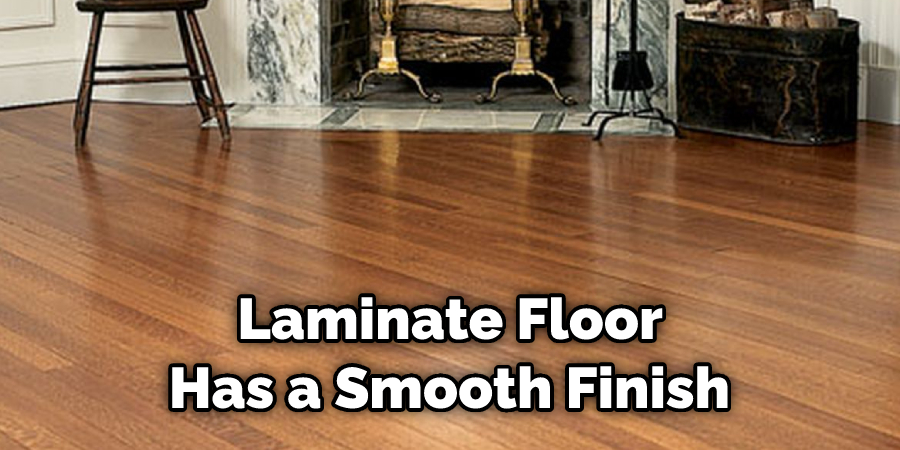
Step 7: Prevent Future Air Pockets(Optional)
To prevent future air pockets from forming, it’s important to address the underlying causes. Make sure that all holes in the subfloor are properly patched and that all gaps around the edges of the floor are properly sealed.
Also, be sure to use a high-quality sealant when installing laminate flooring, and check the seams periodically to make sure they’re still sealed. By taking these precautions, you can help ensure that your laminate floor will stay looking great for years to come.
Step 8: Call a Professional
If you’ve tried all the above steps and still have trouble with air pockets, it’s time to call a professional. A flooring contractor can diagnose the problem and recommend a solution that will work for your situation.
Don’t let air pockets ruin your beautiful laminate floor. With a little patience and some elbow grease, you can fix the problem yourself. Just be sure to take your time and follow the steps carefully, and you’ll have your floor looking good as new in no time. That’s it! You’ve now learned how to fix air pockets under laminate flooring.
Causes of Air Pockets Under Laminate Flooring
Air pockets are a common problem when installing laminate flooring. They occur when a gap between the floor and the subfloor allows air to pass through. The most common cause of air pockets is an uneven subfloor. If the subfloor is not level, it can create valleys and hills that cause the laminate flooring to floating.
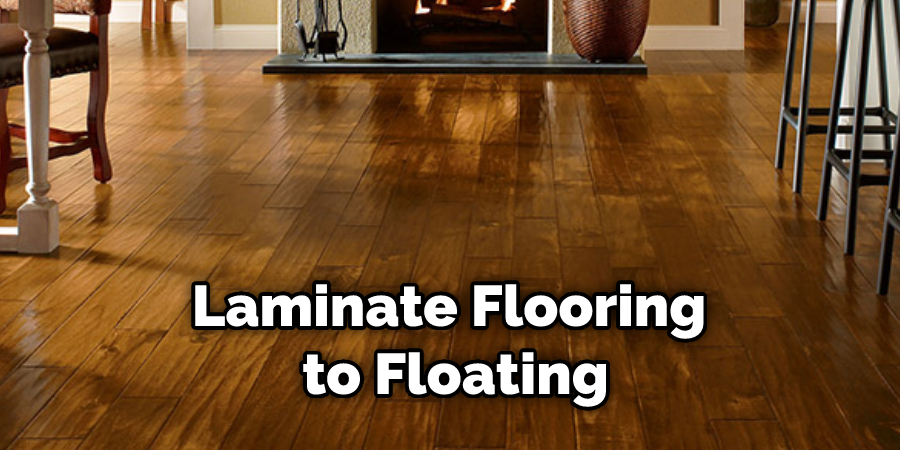
In addition, poor installation techniques can also lead to air pockets. For example, if the flooring is not properly glued down, it will not adhere properly to the subfloor, leaving gaps that allow air to pass through. Finally, expansion joints can also cause air pockets. These are spaces left between boards to allow for expansion and contraction due to temperature changes.
If these spaces are not sealed properly, they can allow air to escape, causing the flooring to float. Air pockets can be a frustrating problem, but understanding the causes can help you avoid them in the future.
Additional Tips for Avoiding or Fixing Air Pockets Under Laminate Flooring
Once you have your laminate flooring in place, the last thing you want is for there to be any issues with it. One problem that can arise is the formation of air pockets under the flooring. This can cause the flooring to become unstable and creak when walked on. However, you can do a few things to avoid this issue or fix it if it does occur.
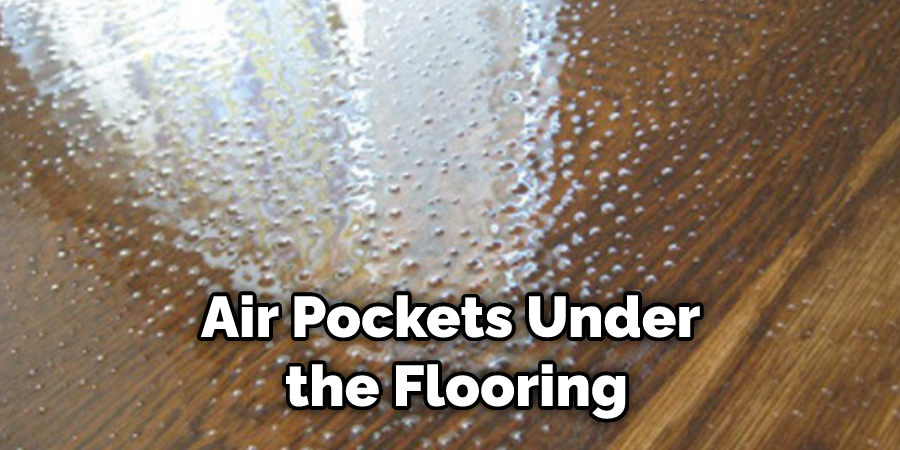
First, ensure that the subfloor is completely level before installing the laminate. If there are any dips or hills, they need to be filled in first. Also, be sure to use an adhesive designed specifically for laminate flooring. This will help create a stronger bond and prevent air pockets from forming.
Finally, make sure that all of the planks are tightly sealed together. Gaps between planks can also lead to air pockets forming. By following these tips, you can avoid any issues with air pockets under your laminate flooring.
How to Identify Air Pockets Under Laminate Flooring
If you have laminate flooring, it’s important to look for air pockets. These are areas where the laminate is not properly adhered to the underlying subfloor, and they can cause the flooring to become loose or even detach entirely. There are a few telltale signs of an air pocket.
First, check for any areas that look bubbled or raised. You might also see gaps or cracks in the seams between pieces of laminate. If you tap on the floor and it sounds hollow, that’s another sign that there may be an air pocket beneath the surface.
If you suspect that there is an air pocket, it’s important to take action immediately. Otherwise, you may end up with a serious problem down the road. Keep reading for more information about how to fix air pockets under laminate flooring.
How Do You Fix Air Pockets Under Vinyl Plank Flooring?
Air pockets are a common problem when installing vinyl plank flooring. They can cause the planks to become loose or uneven if not resolved. Luckily, there are a few simple ways to fix air pockets and ensure a successful installation. The first step is identifying the affected areas by looking for gaps between the planks.
Once you have located the problem areas, use a utility knife to score the surface of the vinyl plank. This will allow the adhesive to adhere better to the surface and create a stronger bond. Next, apply a thin layer of adhesive to the scored area and press the plank firmly into place.
Use a roller or weighted object to secure the plank further and remove any air bubbles. Finally, allow the adhesive to dry completely before walking on or using the flooring. By following these steps, you can fix air pockets and ensure a professional-looking vinyl plank floor.
How Do You Fix a Soft Spot Under Laminate Flooring?
If you have a soft spot under your laminate flooring, it’s important to fix it as soon as possible. Not only will this make your flooring more comfortable to walk on, but it will also help prevent further damage. Luckily, there are a few simple steps that you can take to fix a soft spot under your laminate flooring. First, use a putty knife to remove loose debris or dirt.
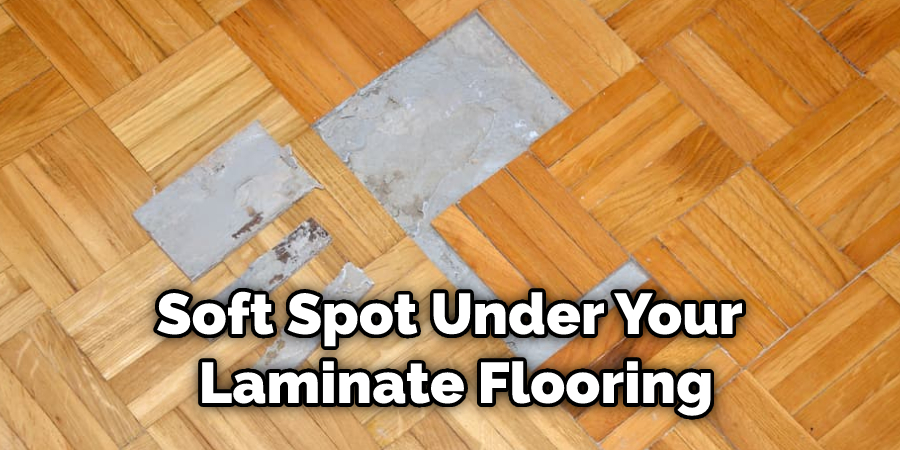
Next, use a plunger to create suction and push the soft spot back into place. If the soft spot is still visible, you can use a self-leveling compound to fill the area. Once the compound has dried, sand it down to flush with the rest of the flooring. With a little patience and effort, you can easily fix a soft spot under your laminate flooring.
How Do You Check for Moisture Under Laminate Flooring?
As any homeowner knows, moisture is one of the biggest enemies of laminate flooring. When water seeps into the cracks and joints of the flooring, it can cause the boards to warp and swell, making the flooring unstable and unsafe. Moisture can also lead to the growth of mold and mildew, which can be both unsightly and dangerous.
For these reasons, regularly checking for moisture under laminate flooring is important. The best way to do this is to use a moisture meter. These devices are relatively inexpensive and easy to use and can help you quickly identify areas of high moisture content. In addition, regularly checking for moisture can help ensure that your laminate flooring stays in good condition for years to come.
You Can Check It Out To Fix Laminate Flooring That is Lifting
Frequently Asked Question
How Do You Stop Laminate Floors from Popping?
One way to stop laminate floors from popping is to ensure that they are installed correctly in the first place. This includes making sure that the flooring is properly aligned and that there is a proper air gap between it and the wall. Another way to prevent air pockets from forming is to use a vapor barrier underneath the laminate.
Is It Normal for Laminate Floor to Bounce?
The quick answer is yes, it is normal for laminate flooring to bounce. This is because it is a floating floor system that is not attached to the subfloor. However, if you notice excessive bouncing, there may be an air pocket or other defect under the floor that needs to be addressed.
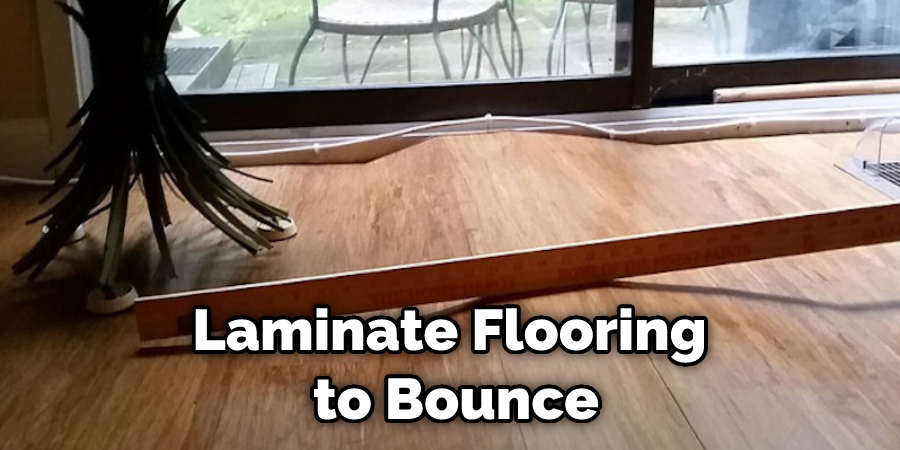
Conclusion
Air pockets can be fixed! All you need is a little know-how and some basic tools. Follow our simple steps to fix air pockets under your laminate flooring and enjoy a seamless, beautiful floor. Thanks for reading our post about how to fix air pockets under laminate flooring.
